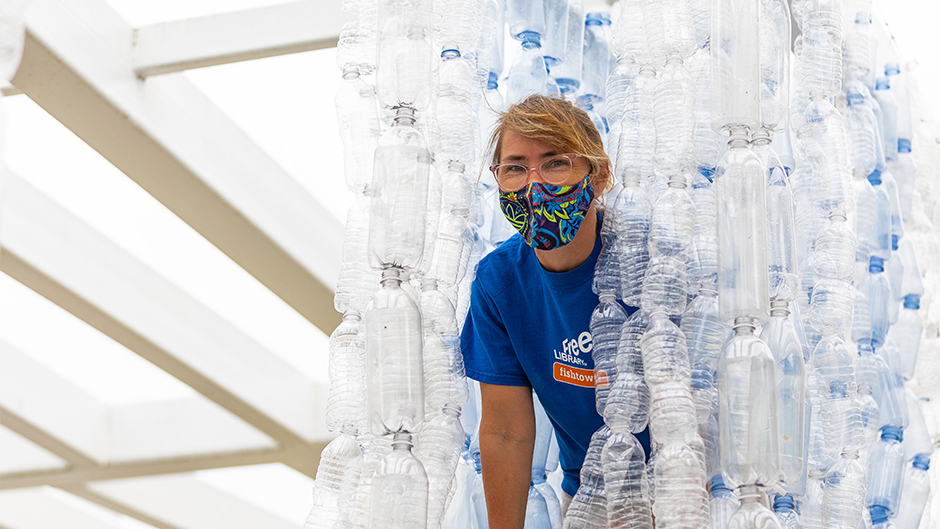Imagine you are floating in the ocean. Sunlight ripples through the surface of the water, your body moves with the current, and you feel relaxed–except you’re surrounded by thousands of plastic bottles, engulfed in a cloud of microplastics and garbage.
This Earth Week, Jenna Efrein, a senior lecturer in glass in the Department of Art and Art History at the University of Miami, is collecting plastic water bottles for a community participatory art installation meant to mimic the experience for sea life under the Great Pacific Garbage Patch, a collection of marine debris in the North Pacific Ocean.
Driven by socioecological concerns, Efrein’s art fuses interactive sculptures and installations relying predominantly on community sourced materials, to create social awareness and contemplation through a practice that invites viewers to participate physically and psychologically.
“How we treat our environment is reflective of how we treat ourselves,” Efrein said. “I wanted to find a way for people to have empathy for the largest ecosystem on our planet, to see what it feels like to be an animal in this ocean under the Great Pacific Garbage Patch.”
Efrein’s latest installation, suspended from the grid canopy in front of the Whitten University Center, uses fishing lines to string together used plastic bottles donated by the community, swaying like a giant wind chime. Spectators can walk through the dangling strands of upcycled materials as if traveling through shifting currents of penetrating light and motion to mimic a glittering, beautiful, underwater environment. But at second glance, the enchanting glow isn’t coming from just the sun.
“When you think about what you’re looking at, you’re looking at an ocean full of plastic,” she said.
The art installation serves as a visual reminder to the community about the dangers of single-use plastics to our ecosystem and the marine life that resides beneath it. Efrein hopes that the installation impacts at least one person to reconsider their use of plastic, especially during the celebration of Earth Week.
“I don’t try to change the world globally. I try to change people individually because that’s something as an individual I can do,” Efrein said, adding that even something as simple as swapping a single-use plastic for a metal or glass alternative can make a lasting impact on saving marine life.
The interactive art piece marks Efrein’s first installment on campus. Previously, her work hung in locations throughout South Florida, like Crandon Park’s Marjory Stoneman Douglas Biscayne Nature Center. In January 2020, her 54-foot “Waterway” installation, similar to the exhibit on campus, reminded beachgoers not to take plastic bottles to the beach, or if they must, not to leave the bottles behind.
Members of the University community are invited to participate in the installment through Friday, April 23, at the Whitten University Center canopy by dropping off empty, clear plastic bottles to be installed in the exhibit or volunteering their time to hang pieces of the canopy. Spectators are also welcomed to walk through the installment and consider–how can you use less plastic?

